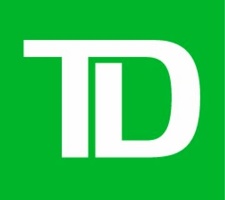@TDAM_Canada
Investor Knowledge + 5 Minutes = New Thinking
As inflation soared across the world over the past two years, global monetary policy became strikingly coordinated. To slow the growth of price increases of goods and services, central banks across developed market (DM) and emerging market (EM) countries have had to swiftly and decisively raise policy rates.
The outcome has been a significant adjustment higher in interest rates in most bond markets, which has resulted in noticeably negative total returns the world over. Other than a few notable exceptions like China and Japan, investors have had nowhere to hide.
What is an investor to do?
While the experience in the global bond market over the past few years conditioned us to expect strong positive correlations in fixed income returns across markets, we believe we are now at an inflection point in the cycle where monetary policy (and bond market) divergences will occur. This is certainly true when comparing markets across the DM and EM blocks, but also true when looking within each block. Going forward, we expect divergences will become more pronounced across all DM and EM bond markets.
Emerging Opportunities in Diverging Policies
With these emerging opportunities in mind, Alexandra Gorewicz, VP & Director, Active Fixed Income Portfolio Management, Hafiz Noordin CFA, VP & Director, Active Fixed Income Portfolio Management, and Sam Chai, VP, Active Fixed Income Portfolio Management, TD Asset Management Inc. (TDAM) recently authored an article titled Emerging Opportunities in Diverging Policies. The article highlights the nuanced opportunities in global fixed income today.
More specifically, the article highlights three key investment opportunities that are emerging in fixed income. The first opportunity is around the importance of accounting for currency hedging costs when analyzing DM bond yields. The second opportunity addresses the monetary policy tightening trends in Japan, and the third section outlines the opportunities within EM bond markets.
The early bird gets the worm
While the article is stacked with great insights, of particular interest is the third section titled EM Bond Markets - the early bird gets the worm. Here, the authors outline how some EM central banks began raising policy rates 6 to 12 months before the U.S. Federal Reserve, the Bank of Canada and other DM markets. Today, with inflation retreating quickly, several EM central banks have not only been able to pause rate hikes for many months now, but some of them are expected to pivot toward easing this summer.
Against this backdrop, year to date, some local EM bond markets have already appreciated substantially as disinflation themes have become more credible. However, given the magnitude of real rates in some EM countries and regions, particularly Latin America and Asia, local currency investments in those EM currencies and government bonds still present attractive opportunities to earn incremental yields compared to DM governments and even DM corporate bonds.
Harnessing fixed income opportunities through differing central bank policies
The increasing divergences between central banks’ policy paths at this stage in the global monetary cycle will likely see bouts of volatility, particularly with respect to currency fluctuations. Therefore, tactical risk management of currency exposures is critical to protect capital deployed abroad as the central bank divergence theme gains traction. This is true as Canadian investors take advantage of investment opportunities in DM and EM countries, alike.
Remember to check out the full article located on our insights page.
The information contained herein has been provided by TD Asset Management Inc. and is for information purposes only. The information has been drawn from sources believed to be reliable. The information does not provide financial, legal, tax or investment advice. Particular investment, tax, or trading strategies should be evaluated relative to each individual's objectives and risk tolerance.Certain statements in this document may contain forward-looking statements (“FLS”) that are predictive in nature and may include words such as “expects”, “anticipates”, “intends”, “believes”, “estimates” and similar forward-looking expressions or negative versions thereof. FLS are based on current expectations and projections about future general economic, political and relevant market factors, such as interest and foreign exchange rates, equity and capital markets, the general business environment, assuming no changes to tax or other laws or government regulation or catastrophic events. Expectations and projections about future events are inherently subject to risks and uncertainties, which may be unforeseeable. Such expectations and projections may be incorrect in the future. FLS are not guarantees of future performance. Actual events could differ materially from those expressed or implied in any FLS. A number of important factors including those factors set out above can contribute to these digressions. You should avoid placing any reliance on FLS.TD Asset Management Inc. is a wholly-owned subsidiary of The Toronto-Dominion Bank.®The TD logo and other TD trademarks are the property of The Toronto-Dominion Bank or its subsidiaries.
 Canada
Canada

